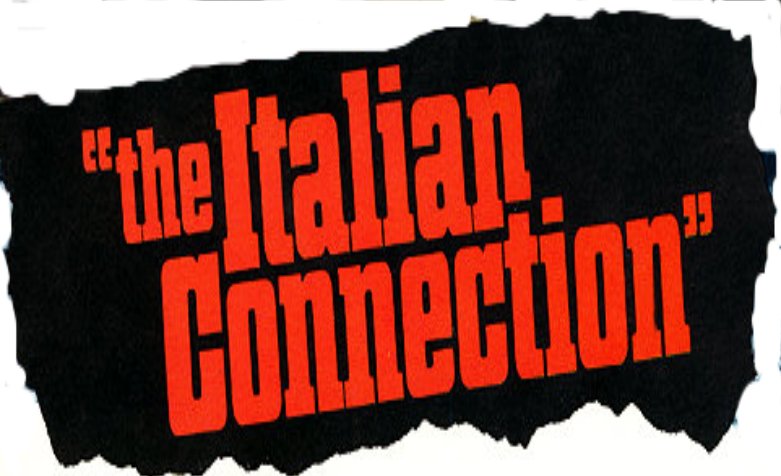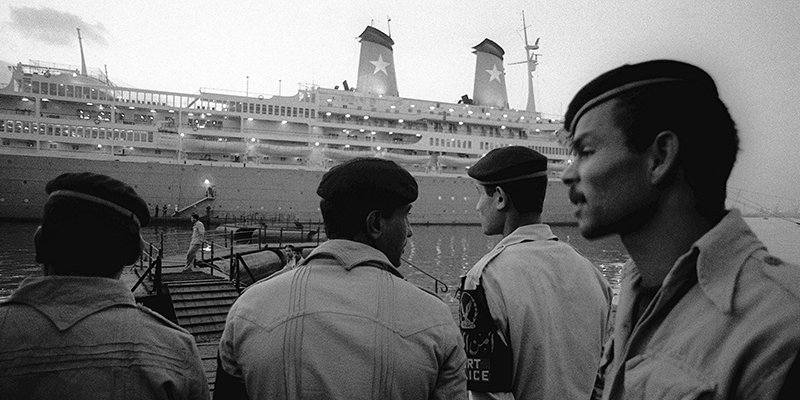The ship was just off the coast of Alexandria, Egypt.
Only 97 passengers were on board at the time; over 600 had disembarked for a bus trip to tour the Pyramids that morning. The pirates rounded the remaining passengers up and secured them inside the ship’s dining room.
The 324 crew members were also taken hostage; however, they were allowed to carry on with their duties.
The pirates were able to maintain the facade that their numbers were much larger, thus discouraging the crew from fighting back.
The pirates demanded the captain take the ship to Tartus, Syria.
In Washington, the Terrorist Incident Working Group assembled to coordinate the US response.
The group included representatives of the White House National Security Council (NSC) staff, the State Dept, Dept of Defense, as well as various intel and law enforcement agencies.
The pirates demanded that Syria contact the Israeli government and request the release of 50 jailed Palestinians.
If Israel failed to comply, they would start executing the hostages.
Unbeknownst to the other hostages, Klinghoffer was shot twice and killed. The pirates then forced two crew members to throw his body overboard.
Abbas encouraged his men to treat the hostages respectively and to cease with their demands.
Why Abbas pulled the plug on the hijacking is a bit of a mystery.
He claimed the original plan was for the Palenstinian men to disembark at the port of Ashdod, Israel and target Israelis (“military targets” only, according to Abbas.)
The terrorists were hot-headed young men who panicked when they feared that a crew member saw their weapons during a room service visit, Abbas said.
To add to the confusion the Palestine Liberation Organization (PLO) and its leader, Yasser Arafat, got involved as well.
The PLF was a militant Palestenian faction whose leader, Abbas, hoped to undermine Arafat’s attempts to find a political solution to the Israeli-Palestinian conflict through negotiations.
The SEAL Team operation was called off when a diplomatic solution was forged; the pirates would disembark the boat voluntarily.
There was a great jubilation that a potential massacre was avoided.
There was one problem: no one in the multiple governments realized the pirates had murdered a passenger until after they had left the ship.
The Americans now wanted to capture the pirates and prosecute them for murder of an American citizen.
The Italians believed the Palestinians should be tried in Italy since the ship was Italian.
Mubarak responded with a lie - the men had left Egypt.
Both Israeli and American intelligence knew the pirates were still in Egypt and planned to leave on an EgyptAir jet to another Arabic country, most likely Tunis.
North’s boss at the NSC, Admiral John Pointdexter, ran the idea of intercepting the plan up the chain of command.
Reagan gave the plan the go-ahead. Pointdexter then tasked Vice Admiral Art Moreau with planning the intercept (you may notice a lot of naval personnel involved in the response. The possible reason will be addressed in a separate thread).
Now....someone had to tell the Italians. 😬
The operation was already underway and there was no time to go through the usual diplomatic channels.
It’s not entirely clear what Ledeen’s official position was in the government. In a previous thread, I noted that Ledeen was a full-time assistant to Secretary of State Alexander Haig.
By 1985, however, Haig was no longer a part of the Reagan administration.
In interviews Ledeen said he was a “part-time consultant to the National Security Council on issues relating to terrorism…”
Regardless, Ledeen spoke fluent Italian. Even better, he was a friend of Craxi’s.
Ledeen had numerous contacts within the Socialist International, including Craxi (more on the reasons why later).
Ledeen called the Hotel Raphael in Rome, Craxi’s residence at the time, and spoke to one of the prime minister’s assistants. He did not cooperate.
According to Ledeen, he told the assistant, “Lives were at stake. If people die tonight because you refuse to let me talk to Craxi because he doesn’t want to be disturbed, you will find your picture on the front page of every newspaper in the world tomorrow morning.”
The assistant acquiesced and put Ledeen through to the prime minister.
After speaking to Ledeen, Craxi granted his permission for the plane to land on Italian soil.
Not only were the four pirates on board, the leader of the PLF, Abu Abbas, was also on the plane.
The Palestinians were not immediately apprehended, however, because the plane and the SEAL team were surrounded by 300 armed Italians.
It was a standoff.
At this point, President Reagan and Prime Minister Craxi spoke directly for the first time.
Ledeen was their translator.
Craxi claimed he was gladly turn the Palestinians over, except it was a legal matter now and out of his hands.
After an intense legal battle in the Italian court system, it was determined that there wasn’t enough evidence to hold Abbas.
He was allowed to flee to Yugoslavia.
Abbas eventually settled in Iraq under the protection of Saddam Hussein.
The Iraqis were receiving US military help against the Iranians at the time, so the CIA had some sway on the dictator.
Clarridge was not able to talk directly to Saddam. The Iraqis gave him the run around and Clarridge left Iraq without his man.
A year later, the Italian government issued an arrest warrant for Abbas. He was sentenced to 5 life-terms, in absentia, for his role as the mastermind of the hijacking plot.
Abbas made claims of supporting a political solution; however, once the 2nd Intifada heated up in 2000, he was back to sending young men to die.
He never again achieved the notoriety he did as the mastermind of the Achille Lauro hijacking.
In Part II, we’ll take a closer look at the Italian connection and Spygate.

























